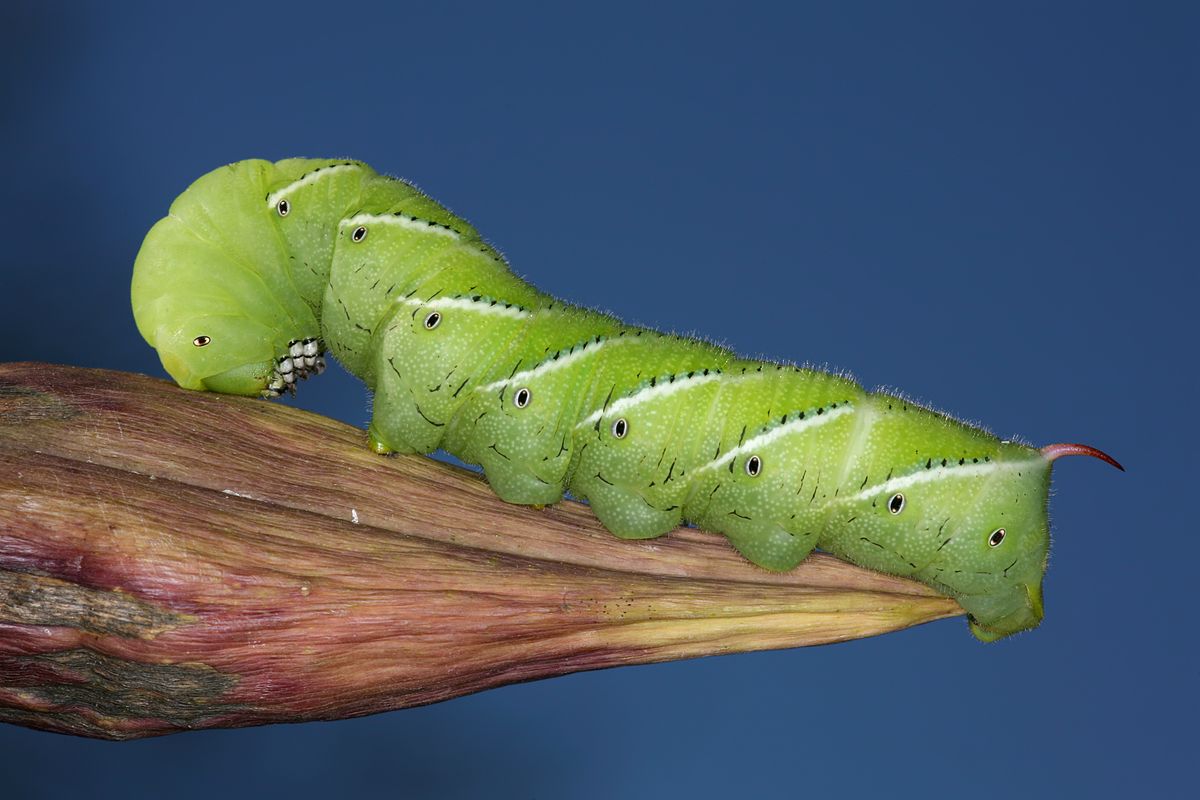Back from the Dead? Goliath Worms 'Drown' and Recover

Hefty, bright-green caterpillars sometimes called goliath worms are living up to their moniker: They are so tough, they can survive underwater for hours, scientists have found.
And during their pupa stage — encased in a chrysalis before transforming into adult moths — they can survive for days at a time without surfacing.
Researchers discovered that the hardy caterpillars of Manduca sexta moths could recover after spending as much as 4 hours immersed in water. The pupae were even more resilient, emerging after a five-day soak and showing no long-term ill effects. [Gallery: Out-of-This-World Images of Insects]
Caterpillars are the larvae of moths and butterflies, and many species are known to have extraordinary adaptations during this life stage that help them weather tough conditions or escape threats. Some click, squeak or whistle to scare off attackers, while others rely on defensive barfing. Some use their poop to send chemical signals that trick plants into lowering their defenses, while others pretend to be poop, to fool predators.
M. sexta larvae, which pupate (grow into an adult) in the ground, face a particularly tough challenge due to seasonal flooding in their desert habitat; how they might overcome that challenge was a question that intrigued study co-author H. Arthur Woods, an entomologist at the University of Montana.
"I’ve always been really impressed with the torrential rains and flooding that can occur during the summer monsoon rains," Woods told Live Science. "We often saw Manduca habitat that got flooded out for days at a time, and we started to wonder whether and how pupae could survive that water."
Breathing underwater — or not
Insects experiencing long dunks underwater use one of two mechanisms to survive and recover, Woods said.
Sign up for the Live Science daily newsletter now
Get the world’s most fascinating discoveries delivered straight to your inbox.
One technique involves the insect extracting oxygen from the surrounding water; that requires specialized body parts. Mayflies and damselflies, for example, have a type of gill that connects to the trachea and conveys dissolved oxygen in water into the insect's body, allowing them to breathe even when fully immersed.
The other method involves sealing up the body and getting by without oxygen, a process known as anaerobic metabolism. But this can be risky, Woods said. This type of metabolism produces toxic byproducts, which, at high levels, can poison the insect.
"So usually insects can use anaerobic metabolism for finite periods of time," he said.
Live and breathe
To find out M. sexta's strategy for surviving underwater, the researchers immersed caterpillars and the more developed pupae. The caterpillars were able to recover after 4 hours underwater — not too shabby. But pupae were "the champs" at recovery, according to Woods. He and his colleagues found that the submerged pupae didn't draw upon dissolved oxygen, and relied on anaerobic metabolism to keep going when they were underwater, for as long as five days.
What surprised Woods was how long they could do it, and still recover.
In the absence of oxygen, a compound called lactate built up in the M. sexta pupae's cells. This could have had fatal consequences, but the scientists found that M. sexta was capable of quickly metabolizing, or breaking down, the lactate once they were removed from the water.
But after spending a long time in water, a sudden reinfusion of life-giving oxygen doesn't necessarily mean that M. sexta's troubles are over.
"That big pulse of oxygen can generate what are called 'oxygen radicals' — basically toxic oxygen-based molecules that zip around and damage other molecules in cells," he told Live Science. "We found that Manduca had elevated metabolic rates well beyond the point when they had rid themselves of all the lactate — which we think means that they were still repairing other tissues," Woods said.
The findings were published online Oct. 5 in the Journal of Experimental Biology.
Original article on Live Science.

Mindy Weisberger is an editor at Scholastic and a former Live Science channel editor and senior writer. She has reported on general science, covering climate change, paleontology, biology and space. Mindy studied film at Columbia University; prior to Live Science she produced, wrote and directed media for the American Museum of Natural History in New York City. Her videos about dinosaurs, astrophysics, biodiversity and evolution appear in museums and science centers worldwide, earning awards such as the CINE Golden Eagle and the Communicator Award of Excellence. Her writing has also appeared in Scientific American, The Washington Post and How It Works Magazine. Her book "Rise of the Zombie Bugs: The Surprising Science of Parasitic Mind Control" will be published in spring 2025 by Johns Hopkins University Press.









